

What Is the Declaration of Independence? by Michael C. Harris. Role Playing with the American Revolution {Freebies Included} - Young Teacher Love. Social studies has always been one of my absolute favorite subjects to teach.
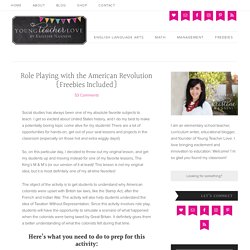
I get so excited about United States history, and I do my best to make a potentially boring topic come alive for my students! There are a lot of opportunities for hands-on, get out of your seat lessons and projects in the classroom (especially on those hot and extra wiggly days!) So, on this particular day, I decided to throw out my original lesson, and get my students up and moving instead for one of my favorite lessons, The King’s M & M’s (or our version of it at least)! This lesson is not my original idea, but it is most definitely one of my all-time favorites!
The object of the activity is to get students to understand why American colonists were upset with British tax laws, like the Stamp Act, after the French and Indian War. 1.) 2.) 3.) 4.) 5.) The Curious Incident of the Dog in the Night-Time by Mark Haddon. The Cartoon Guide to Calculus. Going back to my roots in the math department, I’ve made a calculus primer.
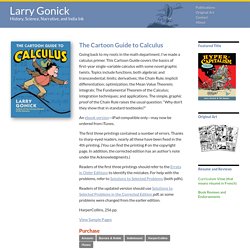
This Cartoon Guide covers the basics of first-year single-variable calculus with some novel graphic twists. Topics include functions, both algebraic and transcendental; limits; derivatives; the Chain Rule; implicit differentiation; optimization; the Mean Value Theorem; integrals; The Fundamental Theorem of the Calculus; integration techniques; and applications. The simple, graphic proof of the Chain Rule raises the usual question: “Why don’t they show that in standard textbooks?”
An ebook version—iPad compatible only—may now be ordered from iTunes. 17 Fun and Engaging Math Books for Kids. Whether your child is new to math, reluctant about math or absolutely loves math, these math books for kids are for you!
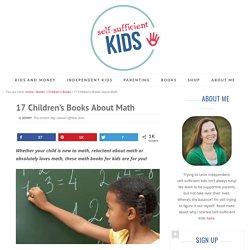
Parents often think of math and reading as two separate endeavors. We teach our kids to count and do basic addition and subtraction and separately teach kids to read. But put the two together – math and books – and you have a magical formula that can increase kids’ knowledge of numbers while at the same time promoting literacy skills. Disciplinary Literacy: Mathematics. A cute kids book for teaching division. The Doorbell Rang tells the simple story of Sam and Victoria, who were just about to sit down and enjoy fresh cookies when two friends arrive and the four children divide up the cookies four ways.
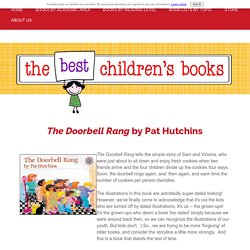
Soon, the doorbell rings again, and then again, and each time the number of cookies per person dwindles. The illustrations in this book are admittedly super dated looking! However, we've finally come to acknowledge that it's not the kids who are turned off by dated illustrations. It's us -- the grown-ups! It's the grown-ups who deem a book 'too dated' simply because we were around back then, so we can recognize the illustrations of our youth. The division lesson in this book is SOLID.
Reading Levels: Interest Level: K-Gr. 3 / Grade Level Equivalent: 2.1 / DRA Level: 16 / Guided Reading: J / Lexile Measure: 340L Sample Pages: Below are sample spreads from inside The Doorbell Rang. Lesson Idea for The Doorbell Rang MANY teachers use this book to teach early division lessons! Best new science books for kids. (The Washington Post) There is a lot of talk these days about how kids should be interested in science.
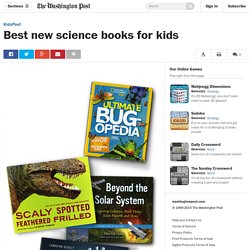
That doesn’t mean you should find everything in science class exciting: You might be curious about outer space, while your friends may love bugs and dinosaurs. There’s an area of science for everyone, and these cool new books might inspire you to discover your inner scientist. “Scaly Spotted Feathered Frilled” by Catherine Thimmesh, 58 pages, ages 9 to 12. When you see a drawing or a model of a dinosaur, or watch one running around in the movies, do you wonder how anybody knows what they look like?
“Beyond the Solar System” by Mary Kay Carson, 128 pages, ages 10 to 13. Disciplinary Literacy Part 1. Dr. Lee Discusses Inquiry-Based Disciplinary Literacy (IDL) in History/Social Studies. Math Curse / Mrs. McDonald's Stories. Disciplinary Literacy: Helping Students Develop Insider Knowledge - Discovery Education. If we want students to learn biology, why not teach them to think, read and write like biologists?
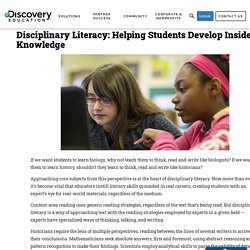
If we want them to learn history, shouldn’t they learn to think, read and write like historians? Approaching core subjects from this perspective is at the heart of disciplinary literacy. Now more than ever, it’s become vital that educators instill literacy skills grounded in real careers, creating students with an expert’s eye for real-world materials, regardless of the medium. Content-area reading uses generic reading strategies, regardless of the text that’s being read. But disciplinary literacy is a way of approaching text with the reading strategies employed by experts in a given field — experts have specialized ways of thinking, talking, and writing.
Historians require the lens of multiple perspectives, reading between the lines of several writers to arrive at their conclusions. These experts don’t just rely on one resource. Disciplinary writing should focus on: Sources. What is Disciplinary Literacy? - Keys to Literacy. The value of embedding literacy instruction in content teaching has been known for decades.

Back in 1979 while studying for my Masters degree, one of my courses was titled Reading in the Content Areas. Since then, I have come across literally hundreds of books and courses with the same title. There has long been a consensus based on decades of research that content teachers can play an important role in teaching students literacy skills (Snow, 2002; Meltzer et al, 2003; Biancarosa & Snow, 2004). This is a major tenet of the Common Core State Standards, as evidenced in the title of the literacy standards: Standards for English Language Arts and Literacy in History/Social Studies, Science, and Technical Subjects and highlighted in the introduction to the standards: Traditionally, the goal of content literacy instruction has been to increase students’ ability to write, listen and speak as they read and learn content from different subjects, also described as content disciplines.
7.Disciplinary Literacy Sample Lesson Plan History lesson. Close Reading Mathematics.